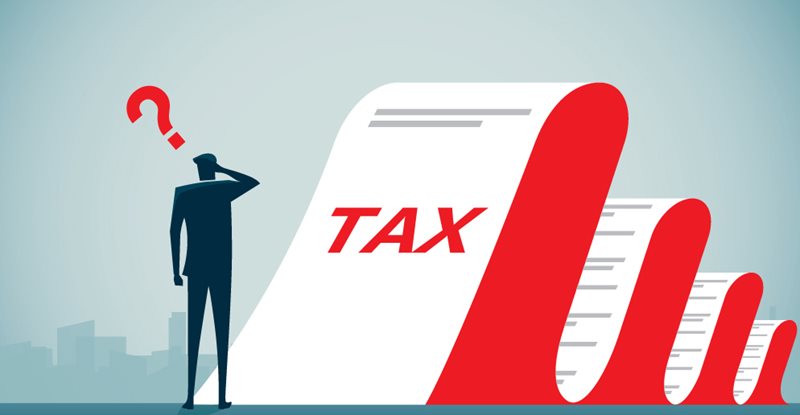
The recent economic downturn may bring forth unexpected tax issues. As creditors become more inclined to forgive or settle debt without full or even partial repayment, more corporations may find that they are settling debt for less than the principal amount. While this may initially seem like a favourable result for debtor corporations, there are tax implications that must be considered. Specifically, debtor corporations need to consider the impact of the debt forgiveness rules so they can plan accordingly.
A recap of the rules
Sections 80 through 80.04 of Canada’s Income Tax Act (ITA) contain a complex and comprehensive set of rules on the treatment of debt forgiveness.
In simple terms, the debt forgiveness rules apply when a “commercial debt obligation” has been settled for an amount that is less than the full amount owing (i.e., the “forgiven amount”). A commercial debt obligation is generally a debt obligation on which interest, if charged, is deductible in computing income. In other words, if interest on the particular debt is not deductible, the debt forgiveness provisions do not apply.
When reviewing the applicability of the debt forgiveness rules, it is therefore necessary to consider the relevant statutory provisions and jurisprudence regarding the deductibility of interest under paragraph 20(1)(c) of the ITA. A full review of interest deductibility is beyond the scope of this article, but the key takeaway is that the debt does not need to be interest-bearing to meet the criteria of a commercial debt obligation. If this is the case, the forgiven amount is applied to reduce certain corporate tax attributes in a specified order, with the remaining unapplied amount included in the debtor’s income.
These tax attributes, presented in the order in which they can be reduced, are as follows:
- Reductions of prior year losses under subsection 80(3)—i.e., non-capital losses net of allowable business investment losses (ABIL), farm losses, and restricted farm losses;
- Reductions of ABILs and gross capital losses (grossed up by paragraph 80(2)(d)) under subsection 80(4));
- Reductions in undepreciated capital cost (UCC) of depreciable property under subsection 80(5);
- Reductions in resource expenditures under subsection 80(8);
- Reductions in the adjusted cost base of capital properties under subsection 80(9);
- Reductions in the adjusted cost base of certain shares where the debtor is the specified shareholder under subsection 80(10); and
- Reductions in the adjusted cost bases of certain shares, debts, and partnership interests under subsection 80(11).
If a residual amount remains, 50% of any forgiven amount will be included in the debtor’s income, as per subsection 80(13) of the ITA.
Minimizing the impact of the forgiven amount
The following practical strategies can minimize the forgiven amount under the debt forgiveness rules:
Transfer the forgiven amount
If there is a residual forgiven amount remaining after applying subsections 80(3) to (10), section 80.04 allows the debtor corporation to transfer the balance of the forgiven amount to reduce the tax attributes of any related corporation or partnership, referred to as an “eligible transferee.”
Transfer depreciable property to a subsidiary
Piggybacking off the section 80.04 designation, consider a scenario in which a debtor corporation has a forgiven amount of $100 and does not want the application of subsection 80(5) to grind down its UCC pool. By chance, the debtor corporation has a sister company (“LossCo”) with non-capital losses of $100 that can’t be used, and an amalgamation isn’t feasible for commercial reasons. The debtor corporation can incorporate a subsidiary (“SubCo”) and transfer the depreciable property to SubCo before applying the debt forgiveness rules. By doing this, the debtor corporation can make a section 80.04 election and assign the forgiven amount to LossCo without triggering a reduction to SubCo’s UCC pool.
The reason for this, as noted in the rules recap, is that the debtor corporation must apply the forgiven amount to the tax attributes in subsection 80(3) to 80(10) before a section 80.04 election can be made. If the debtor corporation decides to retain its depreciable property, the section 80.04 election will not be available.
Preserve discretionary deductions
The debt forgiveness rules dictate that the forgiven amount must first be applied to reduce non-capital and capital loss balances, respectively. The debtor corporation may then designate an amount to be a reduction of UCC or a capital cost balance. Since it is a designation, this reduction is not mandatory. Instead, the debtor corporation may simply take the subsection 80(13) income inclusion of 50% of the unapplied forgiven amount. The latter choice can be advantageous when, instead of grinding the tax attributes by 100% of the forgiven amount, the debtor corporation can take a discretionary deduction, such as a capital cost allowance, to reduce the subsection 80(13) 50% income inclusion and thereby preserve the remaining tax attributes for future years.
Note that if the creditor attempts to transfer the commercial debt obligation to a related person of the debtor for less than 80% of its principal amount, the debt may be considered a “parked obligation,” as defined in subsection 80.01(7) of the ITA, to which the debt forgiveness rules would apply.
Relieving provisions from the income inclusion rule
If none of the above planning opportunities are applicable, the debtor corporation may want to consider the relieving provisions under sections 61.3 and 61.4 of the ITA to help contend with subsection 80(13)’s income inclusion rule.
Section 61.3 provides a deduction for certain insolvent corporations that effectively limits the debt forgiveness income inclusion rule under subsection 80(13) to twice the fair market value of the corporation’s net assets at the end of the year. In its technical notes to the provision, the Department of Finance explains that—assuming a tax rate of 50% or less—this rule ensures that the corporation’s liabilities will not exceed the fair market value of its assets at year-end. An insolvent corporation will most likely have a net asset value of nil, resulting in a full deduction against the subsection 80(13) income inclusion rule.
Note that relief under section 61.3 may apply to both resident corporations and non-resident corporations as long as they are not exempt from Part I tax. In addition, when claiming the section 61.3 deduction, debtor corporations should consider the anti-avoidance provision in subsection 61.3(3), as this provision restricts the deduction when: a) properties are transferred within a 12-month period (during a given year); and b) it is reasonable to assume that one of the reasons for the transfer was to increase the deduction under Section 61.3.
For solvent corporations, section 61.4 allows for a reserve to defer the subsection 80(13) income inclusion over a maximum five-year period (a minimum balance of 20% per year). This is available to a corporation or trust resident in Canada, or a non-resident person carrying on a business through a fixed place of business in Canada, during the year.
The takeaway
The debt forgiveness rules are extensive and quite complex, and we are likely to see them being applied more regularly as British Columbians continue to deal with the economic impact of the COVID-19 pandemic. Thankfully, there are many planning strategies and opportunities available to minimize the income inclusion to the debtor corporation.
Steve Youn, CPA, CA, is a tax partner with DMCL LLP in Vancouver. He specializes in personal and corporate tax services (including private companies and trusts & estates) and inbound cross-border tax structures.
Originally published in the March/April 2021 issue of CPABC in Focus.



